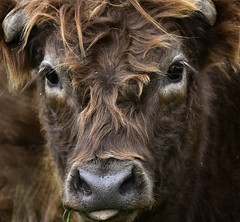Manitoba’s flood creating hazardous conditions
Tuesday, April 14, 2009
The Red River at Winnipeg is almost clear of ice blocks and ice jamming, however there are still dangers from the Red River flood.
Ice blocks which were as high as two storey buildings were ripping out trees, fences and railway ties. “You’ll see huge pans of ice standing vertical, up to 20 feet (6.1 m) high,” said Steve Topping, an official with the provincial Water Stewardship Department. “Ice was shoved up on the shore and took out trees with a very devastating effect. It has changed people’s view of the river.”
“It is incredible, the force. One piece of ice pushed out of the river about 20 feet. You watch the force push this up right in front of your eyes,” said Dean North, of the Selkirk Golf and Country Club.
Royal Canadian Mounted Police are ticketing sight seers who are driving through road closure signs and approaching excavators, cranes and crews breaking up the ice. Vehicles, people, boats, and kayaks are getting in the way.
An eight year old boy is in critical condition after slipping on a culvert Thursday. He was pulled underwater by the speed of the flowing water and remained under for about five to ten minutes until adults could rescue him. The air ambulance supplied by Alberta’s STARS (Shock Trauma Air Rescue Society) remains in the city of Winnipeg, Manitoba.
“This is not a spectator sport. It’s not about getting the best pictures for the family albums. I know floods are seen as a bit of an event, but some of the instances I’m hearing about, people should give their head a shake, they really should,” said Steve Ashton Manitoba Emergency Measures Minister, “Those who fall into the river or get into trouble in another way would be not only endangering themselves but the emergency response crews trying to rescue them. I don’t want to see a situation … where we’re trying our darndest to prevent flooding and save lives and somebody [who] decides to go have a white-water experience ends up killing themselves.”
Early Easter Sunday morning floodwater reached the rural municipalities of St. Andrews and St. Clements north of Winnipeg. Residents were sent an evacuation advisory Good Friday, however some residents remained. Rescue efforts commenced Saturday night to find those stranded and unable to leave as their vehicles cannot travel in the swollen overland floodwaters. Some people were rescued from roof tops as entire houses were swept off of their foundations by the large ice blocks hurtling down the river.
Highways in the area remain closed. Neil Gobelle, of Manitoba Infrastructure and Transportation said to “definitely continue to watch the Red River Valley and north of the city up in the Selkirk area. Things are changing quite a bit, quite quickly, so we’ll keep an eye on those areas.”
As of Easter Sunday, Winnipeg is expected to be ice free on the Red River. The River rose 4 feet (1.2 m) in the course of 24 hours. Rain is in the forecast and the higher temperatures of 17 °C (62.6 °F) will cause melting of snow and ice.
A weather system caused by La Niña is being watched by the United States National Weather Service and its potential effects between April 16-18 for residents along the Red River Valley. “We want people to be aware there is a very real possibility of the river going higher than what is out there,” said Mark Ewens, data manager at the NWS, “To have spring floods like this back-to-back is just an unfortunate series of events that have come along to plague us this spring. We’re wanting people to understand that this is a potentially serious problem.”

